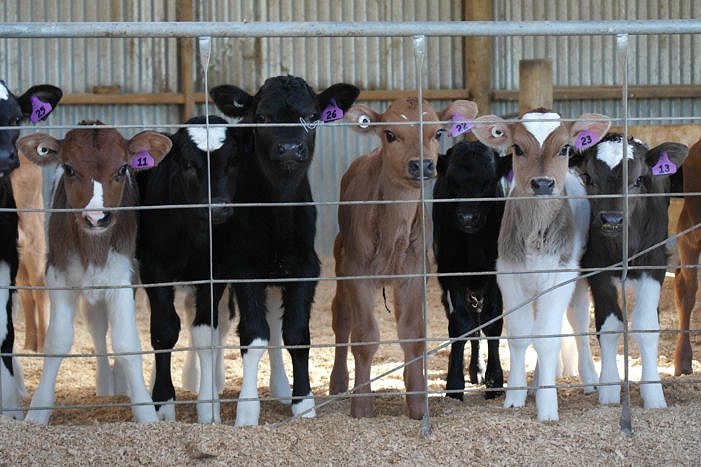
By Angus Kebbell
Fonterra has recently raised its farmgate milk price forecast range for the 20/21 season, lifting the midpoint of its forecast range to $7.00 per kgMS. This is a clear sign that risks to downside are reducing as the co-op calved 20c off the bottom of its forecast range, taking us to a $6.70 - $7.30 band.
This is not a huge surprise given last week it was noted that there was the potential upside to forecasts.
We’ve had a solid run at recent Global Dairy Trade auctions, with Chinese demand for whole milk powder holding strong. Recent results were significant. Fonterra already has contracted a large chunk of this season’s production compared with the same point in previous seasons, which is also a good sign. Dairy prices are proving incredibly resilient, and demand is very strong which is great to see given how challenging the year has been and the dire forecasts predicted earlier in the year due to COVID-19.
Dairy Farmer Karl Dean joins me on the program this week and we discuss his views on the current state of play in the dairy sector, and we discuss some of challenges farmers are facing. There are also positives from a mild spring and the upside in farmgate milk pricing.
Challenges with policy aside, NZ’s dairy industry is holding up very well and the latest price forecasts support that, the mild winter was certainly welcomed by farmers.
New Zealand’s diary industry plays such a significant part to New Zealand’s economy - this we know well - but it also plays an important role in our beef production. Without beef animals coming from the dairy industry New Zealand’s beef production could not be maintained at present levels.
New Zealand’s beef breeding herd does not produce enough replacement animals to maintain the national herd that are slaughtered each year. Indeed, cattle bred in the dairy industry contribute around half of New Zealand’s beef production, including Friesian bulls, dairy-cross beef cattle, and surplus dairy cows.
The Taste Pure Nature origin brand which was recently launched is of long-term value, as most of New Zealand’s beef exports to the US are grinding beef from cows. Taste Pure Nature is designed to raise the awareness and create customer and consumer preference for New Zealand beef and lamb, it is these kinds of initiatives that truly takes our story to the world and is backed up by the food we deliver, and our dairy industry is a big part of this story.
Today’s consumer is asking for food provenance - how was it raised, and is it safe for my family to eat? New Zealand agriculture is proving to our international customers that our pasture-based agriculture is as clean and green as anywhere on the planet. Consumers are making ideological decisions on what to eat, this will be linked to a coming backlash against industrialised food systems. There is a desire for better food at all levels which supports a strong future for ‘real’ food, and not foods produced in a laboratory.
Listen to the podcast for the full interview.
Angus Kebbell is the Producer at Tailwind Media. You can contact him here.
7 Comments
And how do folk deal with this fake news.
The sleaze here is the account is based in USA and the quoted post is noted as Australian.
https://mobile.twitter.com/StephforAnimals/status/1337202291934285824
Intensive Winter Grazing in New Zealand Is a Welfare and Environmental Disaster
https://www.peta.org.au/issues/intensive-winter-grazing-nz/
Stephanie Stilwell
@ StephforAnimals
Animal Lover - Vegan Ⓥ - Animal Rights Activist, Feminist, Civil Rights Activist - LGBTQ...I believe in Love, Kindness, Compassion for ALL...doing my very best!
United Statesstilwellphotography.comJoined October 2017
I have taken some sorry pics around me too. It's just when the bullshit we call marketing hits the reality of some farming systems,band those farmers don't want the change. Ecoli max for swimming is 260 the stream though our place was as high as 570,000. Farmers still going ,same old stuff just consented now.
Yes , good farming practices need to be rewarded , the bad penalised. Its when you have to make blanket regulations to cover the bad that it becomes tricky.
I'm not sure i'll let my kids swim in the local river this summer its already looking disgusting. We may need to start looking at river care based on higher temperatures , not historic ones. Or at research the effect of highrr temps coupled with increased nutrients on our rivers.
Lower flows form 2 droughts and a dry winter don't help either.
I wonder what happened to the Massey project , to raise Fresian bulls to be slaughtered at between 9 to 15 months, rahter than 15 months on ? Or the marketing of this meat .
I’m surprised in the number of calf rearers still out there. I see weaner calves recently struggling to get $350 at South Island sale yards. There must be no margin at all. A mate of mine has been rearing for a last five years and hardly makes a buck. The 100kg calf price never seems enough and after keeping half of them all summer he ends up selling them on the autumn market only to find few buyers because of dry weather, market uncertainty and potential buyers scared away by any chance of m bovis. Last season he was offered $420 at weaning, turned it down and then sold them at $450 net in April.
That pretty much sums up last year. I doubt many made any money. I was in the same boat , just missed the pre xmas high prices by a week . a whiff of drought and prices plummet. This year buyers are pricing in the possibility of a drought , or maybe trying to recoup last years losses. i took the calves through to this spring , and still only got $ 520 - $ 630.normally $ 650 -$ 750 .

We welcome your comments below. If you are not already registered, please register to comment.
Remember we welcome robust, respectful and insightful debate. We don't welcome abusive or defamatory comments and will de-register those repeatedly making such comments. Our current comment policy is here.